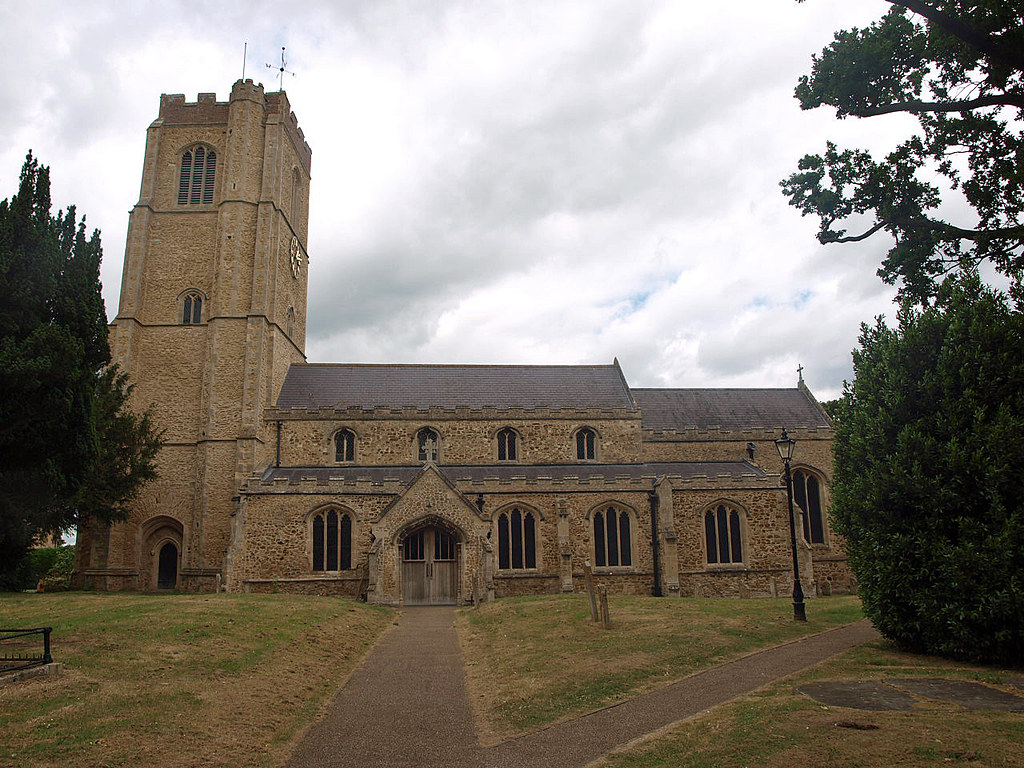Having found Steve Day's record of the glass here a revisit is required, especially for the Skeat and Webb windows.
I returned a couple of weeks later and gained entry; it was worth the effort. I also discovered two redundant churches that I was previously unaware of: St Matthew, Littleport and St John the Evangelist, Little Ouse.
ST GEORGE. A large church thanks to the addition in 1857 of a second (N) nave and a new N aisle. The architect was Teulon. The old parts are entirely Perp except for the respond and W first pier of the nave N arcade which is octagonal and Dec. The rest of the arcade has the usual slim generally lozenge-shaped piers with capitals only to the shafts towards the arches and many-moulded arches; the S arcade is identical. The chancel arch is similar and the arch from the chancel to the S chancel chapel too. The chancel projects and has a C19 E window and C19 untraceried three-light N and S windows. The same windows along. the S aisle. The W tower is uncommonly tall, of four stages with a former N-S passage, angle buttresses and later brick battlements. - FONT. Octagonal, Perp with quatre-foils. - BENCHES. A few with poppy-heads. - PLATE. Cup and Paten of 1570.
LITTLEPORT. This busy little town beside the River Ouse, where sea plants grow and cockle shells are found six feet below the peat, was a very different place before the fens were drained. So inaccessible it was that men declared in those days that it was as rare to see a coach in Littleport as a ship in Newmarket; and bitterly the fenmen opposed the change, for the draining of the marshes meant the enclosure of common land and the cutting down of their food supply of fish and wildfowl. Here at Littleport their smouldering discontent took flame, they sacked the houses of the well-to-do, extracted money with violent threats, and then, made bold by success, marched on to Ely and held it to ransom at the point of punt guns mounted on a waggon. But the troops were called out, 70 fenmen were sent to prison, five were transported, and five were hanged. But none would lend a cart to take them to the gallows, and the bishop of Ely (who then governed these parts with heart as hard as Pharaoh's) had to pay five guineas for one.
An opening in the church tower once led through to a footpath above the floods which frosts now sometimes tum into an ideal place for skating. High above fens and floods rises the splendid tower, a landmark for miles, the finest possession of the spacious church which has little to show within its crazy stone walls except attractive pictures in two windows. In both we see St George slaying the dragon, one in the delicate colouring of Christopher Webb, the other above a richly glowing scene at Emmaus by Martin Travers, who also shows us St Crispin cobbling shoes while his brother Crispian attends to a customer. Two fine records are on the walls, that of Frances Wise who taught in the Sunday School for over 60 years, while Benjamin Arber was completing his 60 years as bellringer. We read that he and his wife died the same year; she went in the height of- summer; he when the leaves were turning.
Flickr.

No comments:
Post a Comment